What Are AI Glasses?
AI glasses are advanced wearable devices that combine traditional eyewear with artificial intelligence capabilities, sensors, displays, and connectivity features. Unlike conventional glasses that simply correct vision or protect eyes, AI glasses can process information, respond to voice commands, display digital content in your field of view, and even analyze what you’re seeing in real-time.
How Do AI Glasses Work?
AI glasses integrate several technologies to deliver their smart capabilities:
- Cameras: Most AI glasses feature built-in cameras that capture photos, videos, and visual data for AI processing.
- Microphones: Enable voice commands, calls, and audio recording capabilities.
- Speakers: Provide audio feedback, music playback, and call audio without traditional headphones.
- Displays: Depending on the model, may include transparent displays, projection systems, or waveguides to show information in your field of view.
- Processors: Miniaturized computing systems that run AI algorithms and manage device functions.
- Connectivity: Bluetooth and Wi-Fi capabilities to connect with smartphones and other devices.
The integration of these components allows AI glasses to understand your environment, respond to commands, and provide contextual information right before your eyes. Most models work in conjunction with a smartphone app that handles more intensive processing and data storage.
Top AI Glasses Brands & Models (2025 Edition)
The AI glasses market has expanded significantly in recent years, with several major tech companies and startups offering compelling products. Here’s a look at the leading brands and their standout models in 2025:

Meta Ray-Ban Smart Glasses
Meta’s collaboration with Ray-Ban has produced one of the most stylish and functional AI glasses on the market. These glasses combine classic Ray-Ban design with advanced AI capabilities powered by Meta’s technology.
- Key Features: 12MP camera, voice assistant integration, social media sharing, audio playback
- Battery Life: Up to 6 hours of mixed use
- Best For: Social media enthusiasts and those who prioritize style
- Price Range: $299-$379 depending on style and lens options
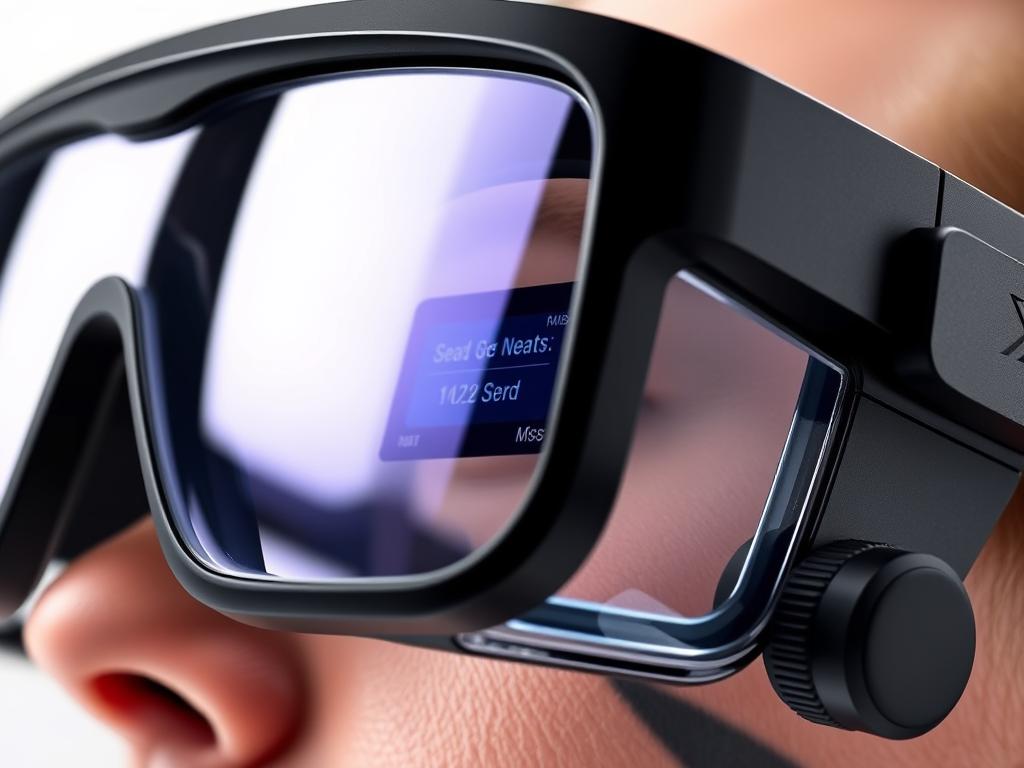
XReal One Pro
The XReal One Pro represents the cutting edge of AR-capable AI glasses, offering an impressive 57-degree field of view and built-in head tracking for immersive experiences.
- Key Features: 1080p display, 57° field of view, 3DOF tracking, dimmable lenses
- Battery Life: 4-5 hours of continuous use
- Best For: AR enthusiasts and professionals seeking advanced display capabilities
- Price Range: $649-$699
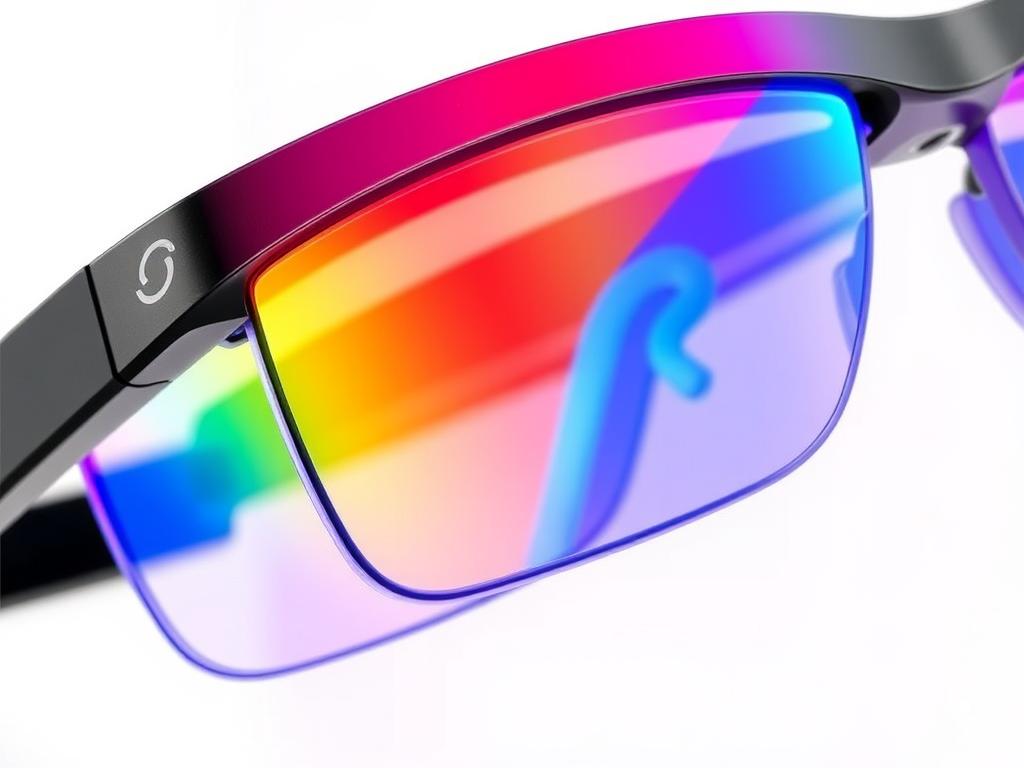
RayNeo Air 3s
The RayNeo Air 3s offers an excellent balance of performance and affordability, making AR technology more accessible without sacrificing quality.
- Key Features: 1080p display, 46° field of view, vibrant color reproduction
- Battery Life: Up to 5 hours
- Best For: Budget-conscious buyers seeking quality AR experiences
- Price Range: $269-$299
Apple’s Rumored AI Glasses
While Apple has not officially announced dedicated AI glasses, industry insiders suggest the company is developing lightweight AR glasses that could integrate with the Apple ecosystem. Following the release of the Vision Pro headset, these glasses would likely offer a more portable, everyday alternative with features like:
- Seamless integration with iPhone, Apple Watch, and other Apple devices
- Advanced Siri capabilities and spatial computing features
- Health and fitness tracking
- Potential release window: Late 2025 to early 2026
AI Glasses vs. Traditional Smart Glasses
While both fall under the “smart eyewear” category, AI glasses offer significant advancements over traditional smart glasses. Understanding these differences can help you make an informed purchasing decision:
| Feature | AI Glasses | Traditional Smart Glasses |
| Intelligence | Built-in AI processing for context-aware responses and learning capabilities | Basic programmed responses without adaptive learning |
| Voice Assistant | Advanced AI assistants with contextual understanding (ChatGPT, Meta AI) | Basic voice commands for predefined functions |
| Visual Processing | Can analyze and understand what you’re seeing in real-time | Simple camera functions without visual understanding |
| Personalization | Learns user preferences and adapts over time | Limited or no personalization capabilities |
| Battery Life | 4-6 hours typical (more processing power required) | 6-12 hours typical |
| Price Range | $250-$700+ | $100-$300 |
The key difference lies in the adaptive intelligence that AI glasses provide. While traditional smart glasses can perform basic functions like playing music or taking photos, AI glasses can understand context, learn from your behavior, and provide increasingly personalized experiences over time.
Benefits of AI Glasses for Daily Life
AI glasses offer numerous practical advantages that can enhance your everyday experiences:
Productivity Boosters

- Hands-free operation: Access information and perform tasks without using your hands
- Real-time notifications: See important alerts without checking your phone
- Voice-controlled multitasking: Send messages, set reminders, and manage schedules by voice
- Visual search: Identify objects, landmarks, and information just by looking at them
Communication & Translation
- Real-time translation: Understand foreign languages through subtitles in your field of view
- Live captioning: See transcriptions of conversations for better understanding
- Seamless calling: Make and receive calls without reaching for your phone
- Visual communication: Share your perspective instantly through photos and videos

Health & Fitness Tracking
Many AI glasses now incorporate health monitoring capabilities:
- Activity tracking: Monitor steps, distance, and calories burned
- Posture alerts: Receive notifications about poor posture or excessive screen time
- Guided workouts: Follow exercise routines with visual cues and feedback
- Environmental awareness: Get alerts about UV exposure or air quality
Entertainment & Experiences
AI glasses can transform how you consume content and experience the world:
- Personal viewing: Watch videos on a virtual screen without disturbing others
- Enhanced audio: Listen to music and podcasts while maintaining awareness of surroundings
- Augmented experiences: See additional information about attractions, museums, or landmarks
- Gaming: Play AR games that blend with your real environment
Best Use Cases for AI Glasses
AI glasses excel in specific scenarios where their unique capabilities provide significant advantages:
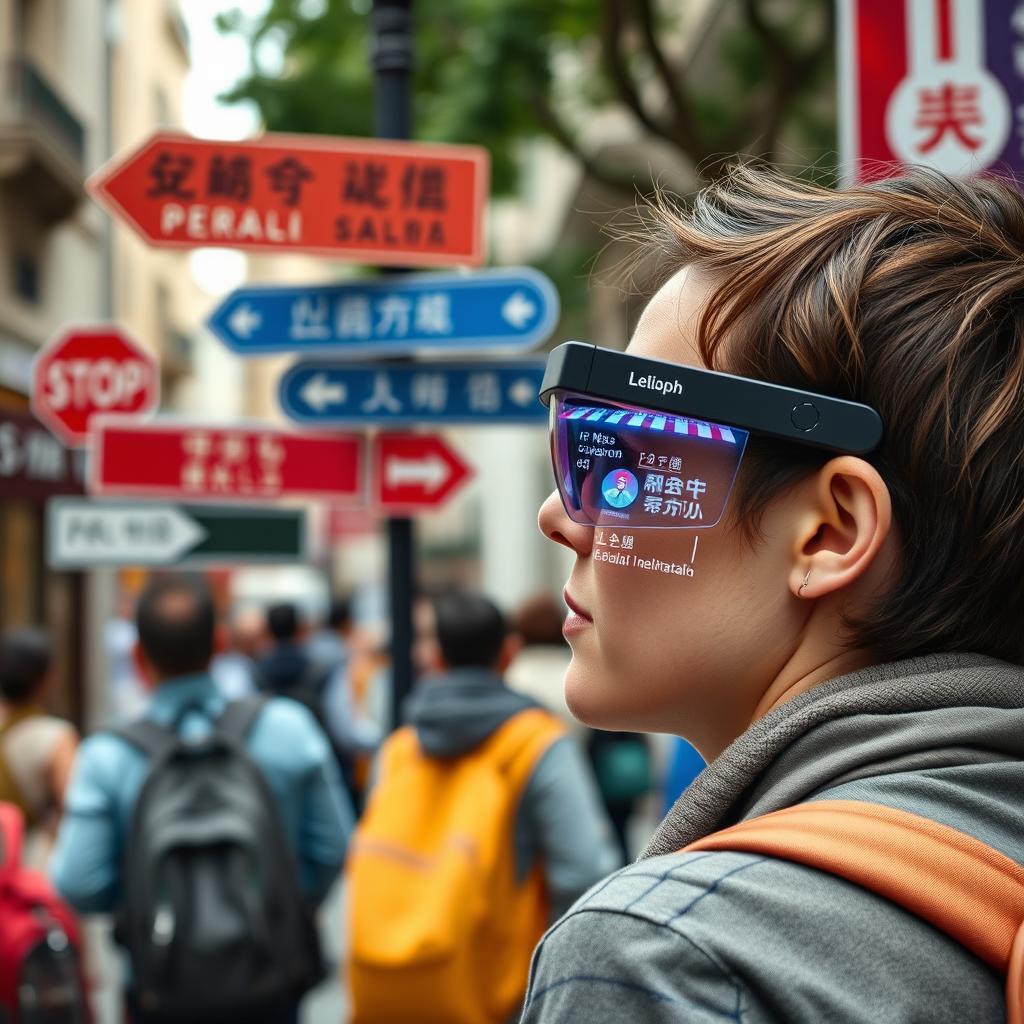
Travel & Navigation
AI glasses are perfect travel companions, offering real-time translation of signs, menus, and conversations. They can provide turn-by-turn directions while keeping your eyes on your surroundings, not on your phone. Many models also offer landmark recognition to provide historical context and information about points of interest.
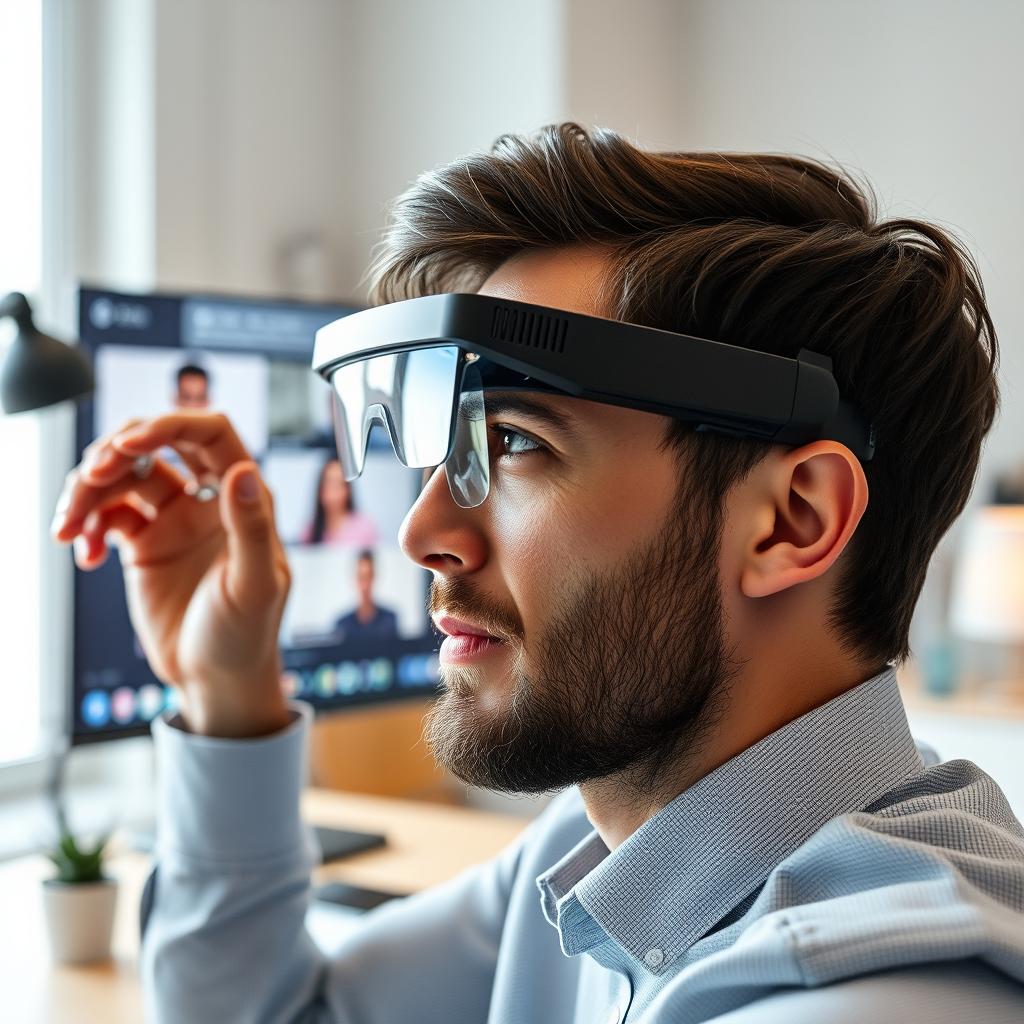
Remote Work & Collaboration
For remote workers, AI glasses can display virtual screens for multitasking, provide real-time meeting transcriptions, and enable hands-free communication. They’re especially valuable for field workers who need access to information while keeping their hands free for tasks.
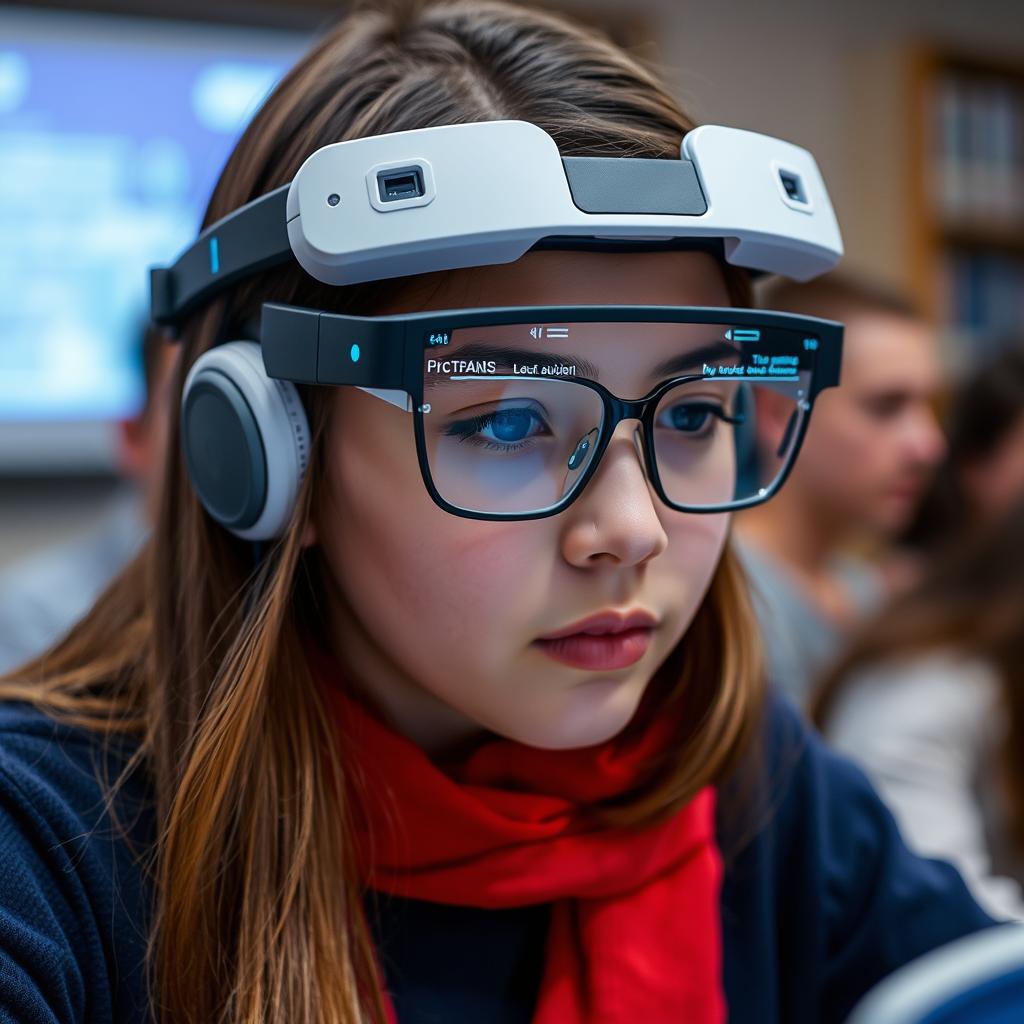
Education & Learning
Students can benefit from AI glasses that provide additional context for subjects they’re studying, instant definitions of unfamiliar terms, and visual learning aids. For hands-on learning, step-by-step instructions can be displayed directly in the student’s field of view.
Find Your Perfect AI Glasses
Discover which AI glasses best match your lifestyle and needs with our personalized recommendation tool.
Pros and Cons of AI Glasses
Before investing in AI glasses, it’s important to understand both their advantages and limitations:
Advantages
- Hands-free access to information and digital assistants
- Discreet notifications without constant phone checking
- Immersive AR experiences with contextual information
- Seamless integration with existing digital ecosystems
- Increasingly stylish designs that resemble normal eyewear
- Unique capabilities like real-time translation and visual search
Limitations
- Limited battery life (typically 4-6 hours of active use)
- Higher price point compared to traditional glasses
- Privacy concerns with built-in cameras and microphones
- Some models may be bulkier than standard eyewear
- Learning curve for gesture controls and voice commands
- Most require smartphone connectivity for full functionality
Privacy Considerations
The camera and microphone capabilities of AI glasses raise important privacy questions. Responsible manufacturers have implemented features like camera indicator lights, physical shutters, or mute buttons. When using AI glasses in public spaces, be mindful of others’ privacy and follow local regulations regarding recording in public places.
Buying Guide: How to Choose AI Glasses
With numerous options available, finding the right AI glasses requires considering several key factors:
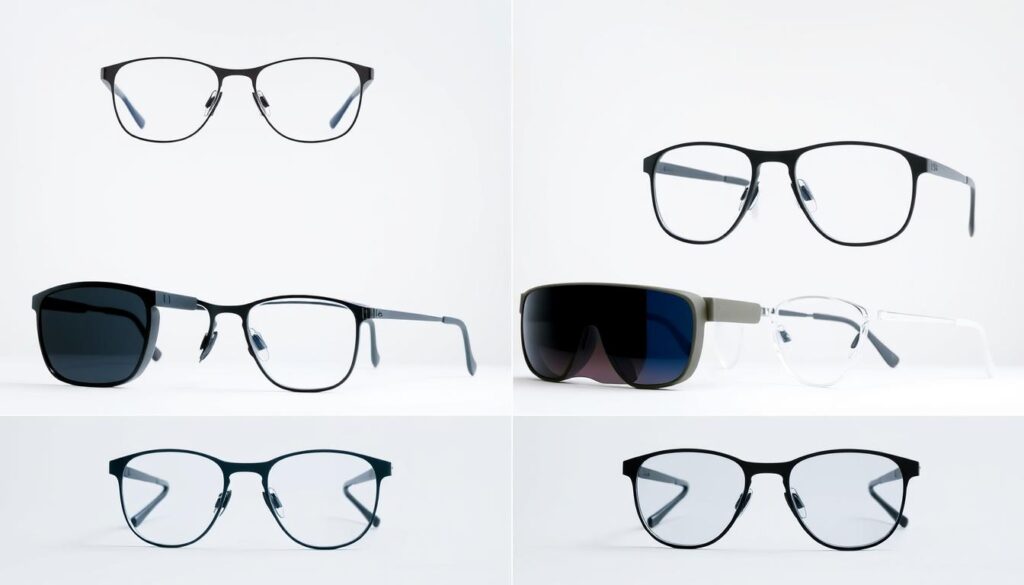
Essential Considerations
- Intended Use: Determine your primary use case (social media, productivity, AR experiences) to narrow down options
- Display Quality: For AR-capable glasses, consider resolution, field of view, and brightness
- Battery Life: Evaluate whether the runtime meets your daily needs
- Comfort & Fit: Glasses should be comfortable for extended wear; some brands offer different sizes
- Style & Design: Consider whether you prefer glasses that look conventional or don’t mind a more tech-forward appearance
- Audio Quality: Test the speakers if you plan to use them for music or calls
- Prescription Compatibility: Check if the model supports prescription lenses or inserts
- App Ecosystem: Evaluate the companion app’s features and compatibility with your devices
Budget Considerations
AI glasses span a wide price range based on their capabilities:
| Price Range | What to Expect | Recommended For |
| $100-$250 | Basic AI features, audio capabilities, simple camera functions | First-time buyers, casual users |
| $250-$400 | Better cameras, voice assistants, social media integration, stylish designs | Social media enthusiasts, everyday users |
| $400-$700 | AR capabilities, higher quality displays, advanced AI features | Tech enthusiasts, professionals |
| $700+ | Premium AR experiences, wide field of view, advanced tracking | AR developers, early adopters |
Ready to Experience AI Glasses?
Compare the latest models and find the best deals on top-rated AI glasses.
The Future of AI Eyewear
The AI glasses market is evolving rapidly, with several exciting developments on the horizon:
Emerging Technologies
- Micro-LED Displays: Brighter, more efficient displays with better color reproduction
- Advanced Waveguides: Wider field of view with clearer AR overlays
- Neural Interfaces: Control glasses with subtle eye movements or even thoughts
- Ambient Computing: AI that anticipates needs based on context without explicit commands
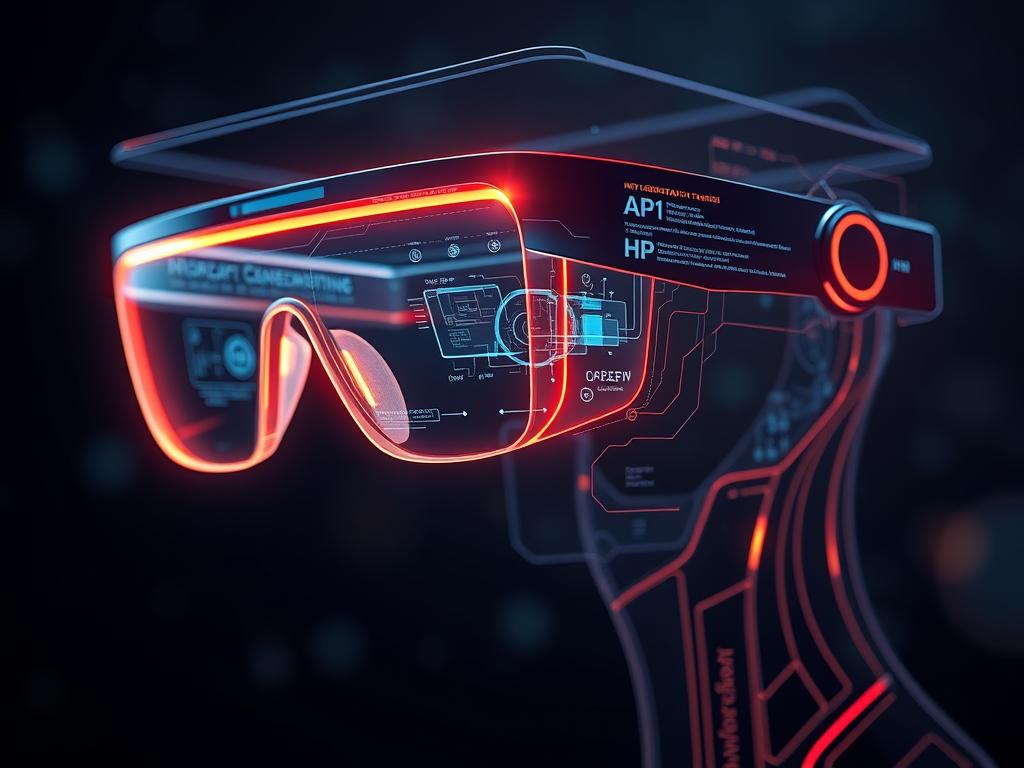
Industry Predictions
Experts anticipate several key developments in the AI glasses market over the next few years:
- Mainstream Adoption: As prices decrease and form factors improve, AI glasses could become as common as smartphones
- Health Integration: Future models may include advanced health monitoring like glucose levels or blood pressure
- Spatial Computing: More immersive AR experiences that interact with your physical environment
- Ecosystem Development: Growth of apps and services specifically designed for AI glasses
- Specialized Use Cases: Industry-specific models for healthcare, manufacturing, and education
Frequently Asked Questions About AI Glasses
Are AI glasses safe to use?
AI glasses are generally safe when used as directed. Manufacturers design them to minimize eye strain with proper display positioning and brightness levels. However, it’s recommended to take breaks during extended use, just as you would with any screen. Regarding radiation, AI glasses emit very low levels of electromagnetic radiation, similar to smartphones, which falls well within safety guidelines established by regulatory bodies.
Do AI glasses work without a smartphone?
Most current AI glasses require a smartphone connection for full functionality, as they rely on the phone’s processing power and internet connection. However, some models offer limited standalone features like taking photos or playing pre-downloaded music. A few high-end models are beginning to offer Wi-Fi connectivity for more independent operation, but complete smartphone independence remains a future goal for the industry.
Can I use AI glasses with prescription lenses?
Yes, many AI glasses models support prescription lenses through different approaches. Some offer custom prescription inserts that clip into the frames, while others can be ordered with prescription lenses directly from the manufacturer. Models with focus dials like the Rokid Max 2 can adjust to accommodate some prescriptions without additional lenses. Check the manufacturer’s specifications for your specific prescription range and options.
How long do AI glasses batteries typically last?
Battery life varies significantly based on usage and features. Audio-focused glasses typically offer 6-8 hours of continuous use. Models with displays and AR features generally provide 4-6 hours of active use. Most come with charging cases that can provide additional charges throughout the day. Intensive features like video recording or bright AR displays will drain the battery faster than basic audio playback.
Are there privacy concerns with AI glasses?
Privacy is an important consideration with AI glasses, particularly those with cameras and always-listening microphones. Responsible manufacturers include visual indicators when cameras are active and provide physical controls to disable recording features. As a user, it’s important to follow social etiquette and local regulations regarding recording in public places. Some establishments may have policies against wearing camera-equipped glasses.
Conclusion: Are AI Glasses Right for You?
AI glasses represent an exciting frontier in wearable technology, offering new ways to interact with digital information while staying present in the physical world. Whether they’re right for you depends on your specific needs, preferences, and comfort with emerging technology.
For early adopters and tech enthusiasts, today’s AI glasses offer compelling features that can enhance productivity, communication, and entertainment. Those who travel frequently, work in hands-on fields, or simply want to reduce their smartphone dependence may find particular value in these devices.
As the technology continues to mature, we can expect AI glasses to become more capable, comfortable, and affordable – potentially changing how we interact with technology as fundamentally as smartphones did a decade ago. By understanding the current capabilities, limitations, and future direction of AI glasses, you can make an informed decision about whether to embrace this technology now or wait for future iterations.
Explore the World of AI Glasses
Ready to experience the future of wearable technology? Browse our recommended AI glasses and find the perfect match for your lifestyle.

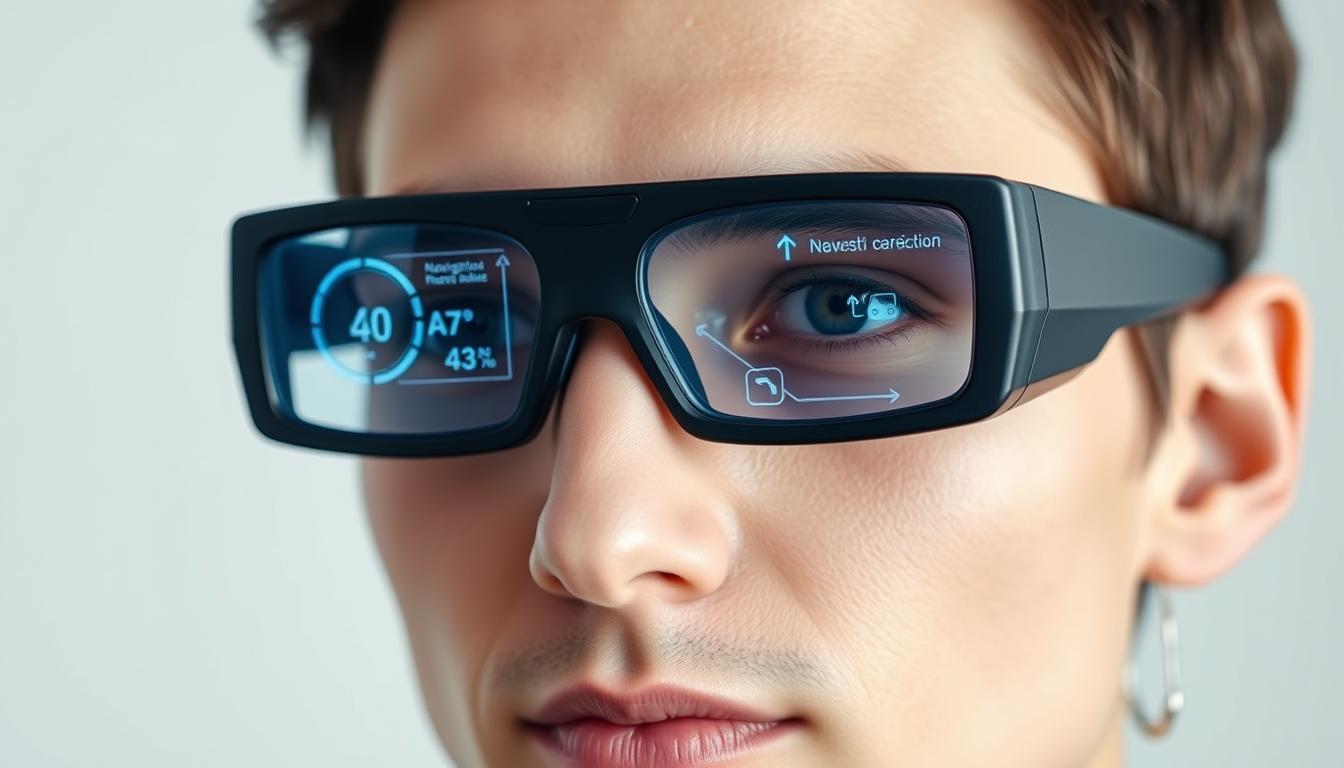
Leave a Reply